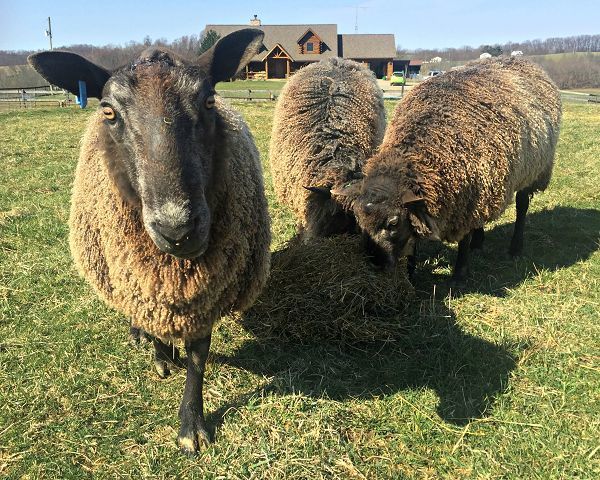Agricultural trend: Local farmers meet demand for lamb and wool
Over the past few years livestock trends within Holmes County have shifted. Today you'll see a lot more sheep in pastures all over Holmes County than ever before, particularly on Amish homesteads where dairy cattle were once the animal of choice.
Don Brown, a sheep breeder and member of the Ohio Heartland Sheep Improvement Association, explained some of the reasons for this.
“Mainly we live in an Amish community,” he said. “You've got Wayne, Holmes, Coshocton, Knox and over into Tuscarawas. The Amish farmer today has a day job, and then he needs something to do at night.”
Between daily milking and all the care that cattle require, many farmers just don't have the time to devote to a high-maintenance animal. Brown also said land comes at a premium nowadays. For many the investment in large tracts to pasture cattle is too much, but sheep work perfectly well on smaller farms.
And that's not counting the market for lamb, which has been growing over the last decade. “We have a sale barn. We have many sale barns in the area, but we have one sale barn that pretty much specializes in sheep and goats, and that's Mt. Hope,” Brown said. “At this point buyers have picked up on this and will come in from Maryland, Chicago, Detroit, New York, New Jersey. And then you have local buyers here who buy here and then ship.”
Where is this demand coming from? It is largely due to ethnic populations along the East Coast and in larger cities like Detroit or Chicago. The demand for foods that fit kosher or halal requirements is growing, as is the demand for farm-fresh organic foods. Globally halal foods make up at least 16.6 percent of all food on the market, an estimated $1.1 trillion industry as of 2013.
This isn't the sort of food you can find in the grocery store either. Lamb that fits kosher or halal requirements is often sold at smaller specialty markets. Lamb sold off the farm or at a sale barn in Holmes County often goes directly to small specialty meat-packing facilities that produce meat products according to cultural traditions.
“Right in Philadelphia, [Pennsylvania],” Brown said, “there is a little meat-packing plant stuck between two department stores, and you wouldn't even know that it existed unless you were native to the area.”
For the would-be farmer looking to get into sheep farming, there are a few things to think about. Historically meat packers around the country sought out larger sheep, but today's market demands smaller market animals. Lambs in the 40- to 60-pound range bring in more money per pound than lambs over that size.
“Last week I think they brought $3.40 per pound,” Brown said.
Then there are types of sheep to consider: hair sheep versus wool sheep. Hair sheep have been becoming more popular because they shed, eliminating the need to shear the animals regularly. They also tend to be more parasite resistant. Wool sheep, on the other hand, sell for a bit more because both wool and meat can be harvested.
“When we go to the sale barn and we have hair sheep and wool sheep, your wool sheep are still going to bring about $10 more than your hair sheep,” Brown said.
If a farmer plans to raise a large flock, the difference in sale prices between hair and wool sheep can add up.
What breed to choose? There are a variety of breeds to choose from, each with its own set of considerations. Katahdins are the most popular hair breed and are often crossed with Dorper rams to increase the size of the animal. Among wool sheep, heritage breeds such as white Dorper, Dorset, Suffolk and others are popular.
Different breeds of wool sheep also produce wool that is suited to different applications. Wool is categorized as either fine wool, medium wool, long wool or carpet wool, which means farmers should choose breeds according to the types of wool they'd like to market.
Raising sheep is no easy feat, but for many in Holmes and surrounding counties these animals are proving to be profitable. For people interested in shepherding their own flocks, the best places to start are the local OSU Extension offices in each county or the Ohio Heartland Sheep Improvement Association. Both organizations will be able to help you learn more about breeds, husbandry and everything else you'll need to know to raise a successful flock.

